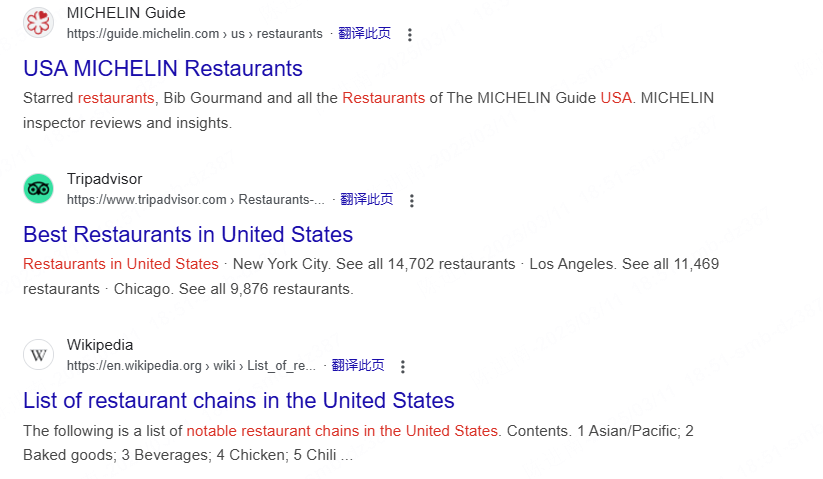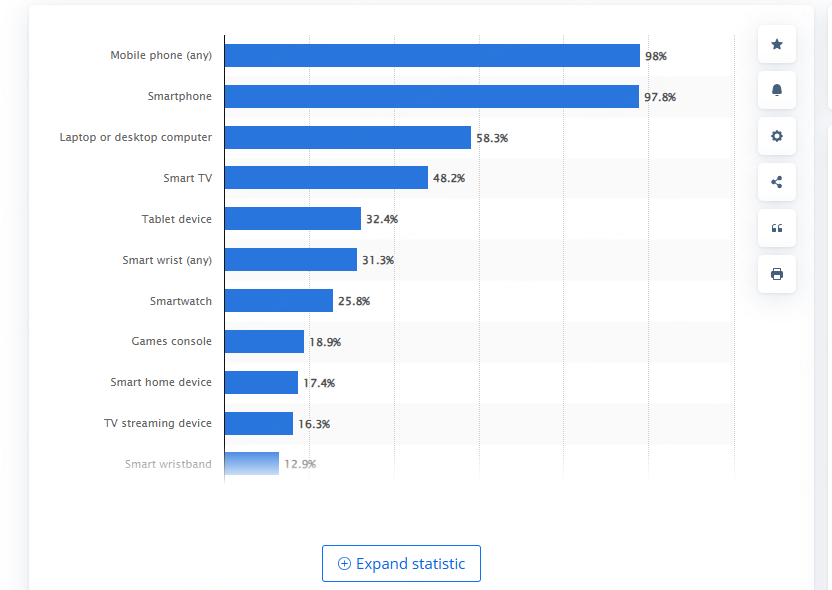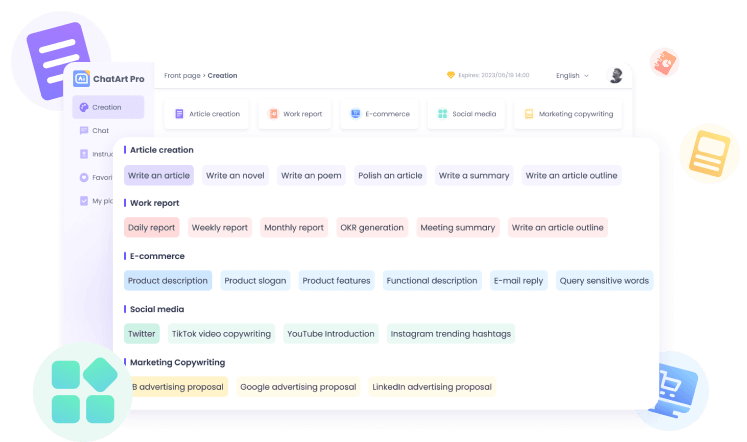How to Build a Powerful Global SEO Strategy (Brand Success Guide)

Did you know that China has over 1 billion internet users, while India has nearly 700 million? These numbers show the immense potential of global SEO for businesses ready to expand internationally.
Reaching these audiences takes more than just translating your website. Google controls 92.9% of search traffic in India, yet its dominance varies in other countries. This makes international expansion a task that needs careful planning.
A strategic global SEO plan is vital for business growth today. Many businesses have seen substantial returns by targeting different countries and languages, particularly in the thriving international e-commerce market.
This piece will help you create a powerful global SEO strategy to direct you through multiple languages, search engines of all types, and regional legal restrictions. Our guidance covers everything from starting your international expansion to optimizing your existing global presence.
In this article:
What is International
SEO
International SEO optimizes websites for multiple countries and languages. Traditional SEO targets a single market, but international SEO needs a deeper understanding of search behaviors, cultural nuances, and technical configurations from region to region.
Picture international SEO as building bridges that connect with audiences worldwide. Each bridge needs specific materials (content), proper architecture (technical setup), and regular maintenance (performance tracking) to work well.
The core components of international SEO has:
1. Market-Specific Optimization: Content and keywords must match different regions while keeping brand consistency.
2. Technical Implementation: The right URL structures, hreflang tags, and geotargeting signals need proper setup.
3. Content Localization: Content should go beyond simple translation to appeal to local audiences.
4. Search Engine Considerations: Each region's search engines need specific optimization - Baidu in China or Yandex in Russia.
International SEO plays a key role when businesses expand into markets with unique search priorities. To cite an instance, see how Google leads most Western markets, while Baidu captures 63.5% of China's search market share and Yandex controls 45% of Russia's search traffic.
A successful international SEO strategy tackles three main challenges:
Language Targeting
Target languages should match market potential.
Content must connect with native speakers naturally.
Language tags and indicators need proper implementation.
Geographic Targeting
Target countries or regions need careful selection.
Local search patterns require deep understanding.
URL structures must follow best practices.
Technical Configuration
Teams must choose between ccTLDs, subdomains, or subdirectories.
Hreflang tags need correct implementation.
Different versions need proper content management.
Different markets have unique characteristics at their core. Mobile optimization becomes significant in regions like India, where 98% of internet users browse the web on mobile devices.
International SEO also needs careful attention to:
Each country's search engine market share.
Local consumer behavior patterns.
Regional technical infrastructure.
Cultural preferences and taboos.
Local regulations and compliance requirements.
International SEO adapts constantly to market changes. Teams track algorithm updates across search engines, follow local SEO best practices, and adjust strategies based on performance data.
A strong international SEO strategy helps businesses reach global audiences while keeping their brand identity intact across markets. This approach will give a clear path for potential customers to find relevant, localized content whatever their location or language priorities.
Local SEO vs Global SEO
Knowing the basic differences between local and global SEO is a vital first step to expand your brand's digital presence. Both strategies want to improve search visibility, but their approaches and target audiences are quite different.
Key differences
The main difference comes down to geographic scope and audience targeting. Local SEO makes businesses with physical locations more visible in specific areas. Global SEO reaches audiences across multiple countries and languages, which works best for businesses that want international market reach.

There's another reason that sets them apart - the keyword strategy. Local SEO uses location-specific keywords and phrases, and "near me" searches play a big role.Global SEO needs broader keyword research across different languages and regions. It must account for cultural nuances and search behaviors unique to each market.
al SEO puts you against businesses in the same area, which means fewer competitors. Global SEO faces worldwide competition and needs more resources and strategic planning.
Each approach brings its own technical challenges:
Local SEO prioritizes:
Google Business Profile optimization
Local citations and directories
Location-specific content
Regional backlink building
Global SEO needs:
Multi-language website versions
International URL structures
Hreflang tag implementation
Country-specific hosting considerations
When to expand globally
Smart market analysis and business readiness should drive your decision to implement global SEO. Start by looking at your current traffic patterns with analytics tools to spot high visitor numbers from specific countries. This data shows where opportunities might lie.
Your business might be ready for global expansion if you see:
Steady traffic from international markets
Strong performance in your home market
Resources available for content localization
Ability to serve international customers well
A full market viability check should come before any global moves. Markets with multiple successful competitors, not just one or two big players, usually show enough demand for new businesses.
Your operational setup matters too. Global SEO needs specific resources:
Native language expertise
Cultural knowledge
Technical infrastructure
Technical infrastructure Local market research capabilities
The best markets usually mix high search potential with lower competition. In spite of that, you should match your choice of competitive markets with your available resources and long-term business goals.
Note that global expansion means adapting to different countries, languages, or both. Most users browse in their native language, so proper localization becomes crucial for success in international markets. Your expansion strategy must have complete plans for content adaptation and cultural consideration.
Why Your Brand Needs International SEO
Businesses can find new possibilities for growth by expanding into international markets. Recent data shows India, Brazil, and Italy lead the world in Google search traffic share. This highlights the huge potential for brands ready to use international SEO strategies.
Growing global search traffic
International SEO greatly increases website visibility in different geographical locations. Studies show 84% of marketers see positive revenue growth through content localization. These numbers prove its direct effect on business results.
A good international SEO strategy lets brands:
Show up at the top of local search results
Build trust through region-specific optimization
Get organic traffic from multiple countries at once
Reaching new markets effectively
Success in global markets needs more than just translation. Google handles 89.61% of global search traffic. However, platforms like Baidu in China and Yandex in Russia have strong market shares in their regions. Each target market needs its own approach.
Breaking into new markets requires understanding local traits:
Search engine choices (Baidu has 63.5% of China's search market, Yandex has 45% in Russia)
Mobile usage patterns (98% of India's internet users browse on mobile)
Cultural differences and local rules
Benefits of international seo
International SEO offers major advantages for brands looking to build global recognition. It creates multiple revenue streams by connecting with customers across regions.
Key benefits include:
Better brand credibility through local content
Less reliance on single markets
Edge over competitors in new territories
Higher ROI through organic growth
International SEO helps businesses become authorities in specific regions. Using hreflang tags and regional URL structures lets brands target different countries while keeping their message consistent.
The strategy also helps get better market insights. Companies can spot new opportunities by tracking performance across regions. This evidence-based approach ensures steady improvement and sustainable growth in global markets.
A well-planned international SEO creates stronger bonds with local audiences. Users trust brands more when they see content in their language, along with familiar payment options and local currency pricing. This customized experience builds trust and creates lasting customer relationships.
How to Research Your Target Markets
Market research is the life-blood of any working global SEO strategy. Companies can make smart decisions about international growth by analyzing market dynamics and their competition's presence.
Analyze search behavior by country
Search patterns change by a lot across cultures and regions. Your content strategies need adjustments based on these variations in specific markets. To cite an instance, mobile optimization becomes significant for markets like India, where 98% of internet users access the internet through mobile devices.
To review market potential properly:
Review current traffic patterns
Use Google Analytics 4 to track visitor demographics
Monitor time spent on product pages
Analyze conversion rates by region
Review form submissions from international visitors
Analytics data combined with browser language settings and search priorities gives deeper insights into market readiness. Economic indicators, internet penetration rates, and overall market conditions play a vital role in growth opportunities.

Study competitor presence
A detailed competitive analysis shows market opportunities and possible challenges. The presence of multiple successful competitors usually points to enough demand for new entrants. Semrush's Market Explorer helps understand:
Key market players
Trending keywords
Audience demographics
Social media engagement patterns
Domain authority metrics
Your competitor research should focus on:
Digital Footprint Analysis
Website structure and navigation
Content strategies and publishing frequency
Social media presence and engagement
Backlink profiles and domain authority
Market Positioning
Product offerings and unique value propositions
Target audience segments
Pricing strategies
Geographic coverage
VPN-enabled searches help you understand how search results vary across regions. This method gives an explanation of regional ranking patterns and content optimization strategies.
Market Explorer tools provide valuable demographic data about target audiences. The focus stays on age, socioeconomic status, interests, and preferred social platforms. This information shapes content development and marketing strategies. To cite an instance, an audience from a higher income bracket might shift your content focus toward premium features and quality messaging.
Your assessment of competitors' strengths and weaknesses in each target market should cover:
Keyword targeting strategies
Local language optimization
Cultural adaptation approaches
Technical SEO implementation
Market research reveals opportunities where your brand can distinguish itself and build a strong presence in new territories. Your understanding of local search behaviors and competitor strategies helps develop targeted approaches that appeal to specific regional audiences while keeping brand consistency across markets.
Choose Your Global Website Structure
Your website's global SEO success depends heavily on its structure. The domain approach you choose will shape your search visibility, costs, and marketing results.
Single domain vs multiple domains
A single domain brings all international content under one roof and offers clear benefits:
Consolidated Domain Authority
Better search rankings from shared link equity
SEO work benefits all regional content
Smaller markets gain visibility through the domain's combined strength
Resource Optimization
Lower hosting and security costs
Central content management
Quick technical updates across regions
A global brand's success story shows the power of this approach. They saw an 841% jump in visibility after moving 23 regional domains into subdirectories.
Language targeting options
Language targeting needs a good balance of user priorities and technical setup. Google lets you target languages in several ways:
Content Delivery Methods
Separate URLs for each language version
Hreflang tags to point to correct languages
Content that adapts to user settings
The best results come from keeping each page in one language. You should avoid mixing translations side by side. Make sure to block machine translations in robots.txt to prevent spam flags.
URL structure decisions
You have three main choices for international website URLs:
Country Code Top-Level Domains (ccTLDs)
Best way to target specific countries
Example: website.fr for France
Each domain needs its own registration
Third-level domains for regions
Example: fr.website.com
Good for geographic targeting
Subdirectories
Folders in your main domain
Example: website.com/fr
Most budget-friendly option
Put the region before language in your URL structure. Here's the right way:
Right: website.com/ca/fr (Canada/French)
Wrong: website.com/fr/ca
Technical aspects of URL structure need:
UTF-8 encoding
Special character handling
Same hierarchy everywhere
Google looks at several signals to figure out regional targeting:
How close servers are to users
Local contact details
Currency and language choices
Links from local sites
Your final choice should match:
Your tech team's capabilities
Marketing budget
Brand needs
Local rules
Create Your Content Strategy
A successful content strategy needs careful thought about language, culture, and how people search online. Search engines generate more than 90% of business leads. You need at least twelve languages to reach 80% of internet users.
Translation vs localization
Simple translation doesn't work well enough for international markets. Word-for-word translations often miss cultural meaning and might change what you want to say. Let's look at these key differences:
SEO Translation
Changes text while keeping original keywords
Changes text while keeping original keywords
Makes content visible across languages in search engines
Content Localization
Makes content fit local culture and context
Takes local sayings and expressions into account
Creates content that strikes a chord with target audiences
Research shows 76% of online shoppers like websites in their own language . Good localization helps businesses create content that speaks to their audience. This promotes stronger connections and gets more people to participate.
Local keyword research
al markets. Native speakers help find search terms that line up with local priorities. German markets offer a good example. The phrase "make your lips look bigger" gets 20 monthly searches. "How to make your lips bigger" pulls in nearly 1,200 searches.
Local keyword research must focus on:
Local search patterns
What competitors use for keywords
Different ways people say things
Search volumes in each region
Cultural considerations
Culture shapes how well international content works. Each market has its own values, customs, and expectations that affect online behavior. The core team should focus on:
Design Elements
Color choices
How layouts should look
Visual organization
Ways to navigate
Content Adaptation
Season-specific content
Local holidays
Regional events
How people like to pay
Cultural adaptation goes beyond translation. To cite an instance, Australian Christmas campaigns look very different from Northern Hemisphere ones because seasons are opposite. European summer holidays also change buying patterns differently across regions.
The path to cultural relevance:
Study local customs and traditions
Watch regional trends
Change messages to fit local context
Think about time zones and seasons
These strategies will give your content an authentic connection with target audiences. Regular content checks help keep cultural awareness strong and show where you can do better. Constant watching and adapting helps brands build lasting bonds with international audiences. This approach helps avoid cultural mistakes that could hurt their reputation.
Set Up Technical SEO Elements
Technical implementation forms the backbone of successful international SEO strategies. The right setup will give search engines a clear understanding of your website's language and regional variations. This helps direct users to content that matches their needs.
Hreflang implementation
Hreflang tags tell search engines about language and geographic targeting. You can add these HTML attributes through three methods:
HTML head section
HTTP headers (mainly for PDFs and non-HTML content)
XML sitemaps
Your implementation should follow these guidelines:
Tag Structure Requirements
Each page needs self-referencing links
All language versions must have return links
Mix ISO language codes with region codes as needed
The most crucial part is keeping hreflang implementation consistent. Every language version must connect to all other available versions to create a complete reference circle. This stops duplicate content problems and makes sure users get the right content.
Geotargeting signals
Hreflang tags work better when combined with other technical elements that boost regional targeting:
Server Location
Local IP addresses make regional relevance stronger
CDNs make pages load faster
Your server's location affects rankings
Domain Configuration Country-specific domains (ccTLDs) send the strongest geotargeting signals. Here are some examples:
.fr for France
.jp for Japan
.de for Germany
l with standard optimization methods. Bing focuses mainly on:
Language metadata
URLs with location codes
Server geography
These extra steps will help maintain technical quality:
Add language selection options on every page
Stop automated translations in robots.txt
Use proper UTF-8 encoding for special characters
The x-default hreflang attributes work well for pages without specific language targeting. This gives users a backup option when their language doesn't match what's available.
Regular technical checks catch problems with international SEO setup early. Watch these elements through search console reports and tools built for managing multilingual websites.
Track Global Performance
You just need meticulous tracking of key performance indicators to measure success in international markets. Businesses can optimize their global SEO strategies with complete analytics and regular monitoring.
Key metrics to monitor
Organic visibility shows how well international SEO performs. These significant metrics need tracking:
Search Performance Metrics
Organic traffic from specific countries
Search engine visibility across markets
Pages per session and bounce rates
SEO efforts link directly to business outcomes through conversion tracking. The focus areas are:
Conversion rates by region
Cost per acquisition
Customer lifetime value
Return on investment
Global seo analytics tools
Several powerful tools help track international SEO:
Google Analytics 4 This platform gives a complete picture of:
Traffic patterns by country
User engagement metrics
Internal site searches
High-converting pages
Search Console The platform shows vital data about:
Search query performance
Technical SEO issues
Sitemap accuracy
Mobile optimization status
Specialized SEO Platforms ProRankTracker and similar tools offer:
Daily ranking updates across regions
Local and global search volumes
Multi-language tracking capabilities

ChatArt - The best AI chat, AI writing, and marketing assistant
5,323,556 users have tried it for free!
- Supported models: OpenAI o1-preview, o1-mini, GPT-4o, Claude 3.5 Sonnet, Gemini 1.5 Pro, etc.
- The AI writing generator creates high-quality and smooth articles, blogs, papers, and more with just one click.
- Over 100 writing templates available, supporting text export in multiple languages.
- The professional AI marketing SEO writing assistant takes care of everything from marketing copy and e-commerce writing to slogans, emails, and brand building—all in one place.
- Grammar checker and bypass AI detector help create 100% original text content, fully freeing up your writing inspiration!
Regular audits
Regular SEO audits keep international strategies working well. The key audit components include:
Technical Assessment
Crawlability verification
Site speed evaluation
Mobile responsiveness checks
Content Analysis
URL structure review
Hreflang implementation accuracy
Language targeting effectiveness
Regional content relevance
Each target region needs clear key performance indicators. Custom segments for different countries and languages help learn about user behavior and engagement levels. Regular data analysis spots trends and areas to improve, which keeps your international SEO strategy competitive.
Conclusion
A powerful global SEO strategy needs solid planning, research, and consistent execution. This piece explores everything in international SEO, from technical setup to content localization.
Your success in global markets depends on how well you understand local search behaviors and cultural nuances. Companies can't just translate content - they must adapt their message and maintain technical excellence with proper hreflang implementation and URL structuring.

Free Text Message Reply Generator

Free AI Tinder Bio Generator

Free Instagram Bio Generator












































 AI Writer
AI Writer
 AI Image
AI Image
 AI Chat
AI Chat
 Email Writer
Email Writer
 Novel Writer
Novel Writer


 DeepSeek R1&V3
DeepSeek R1&V3
 GPT-4o & o3-mini
GPT-4o & o3-mini
 Claude 3.7 sonnet
Claude 3.7 sonnet
 Gemini 2.0 Pro
Gemini 2.0 Pro
 GPT-4o mini
GPT-4o mini











